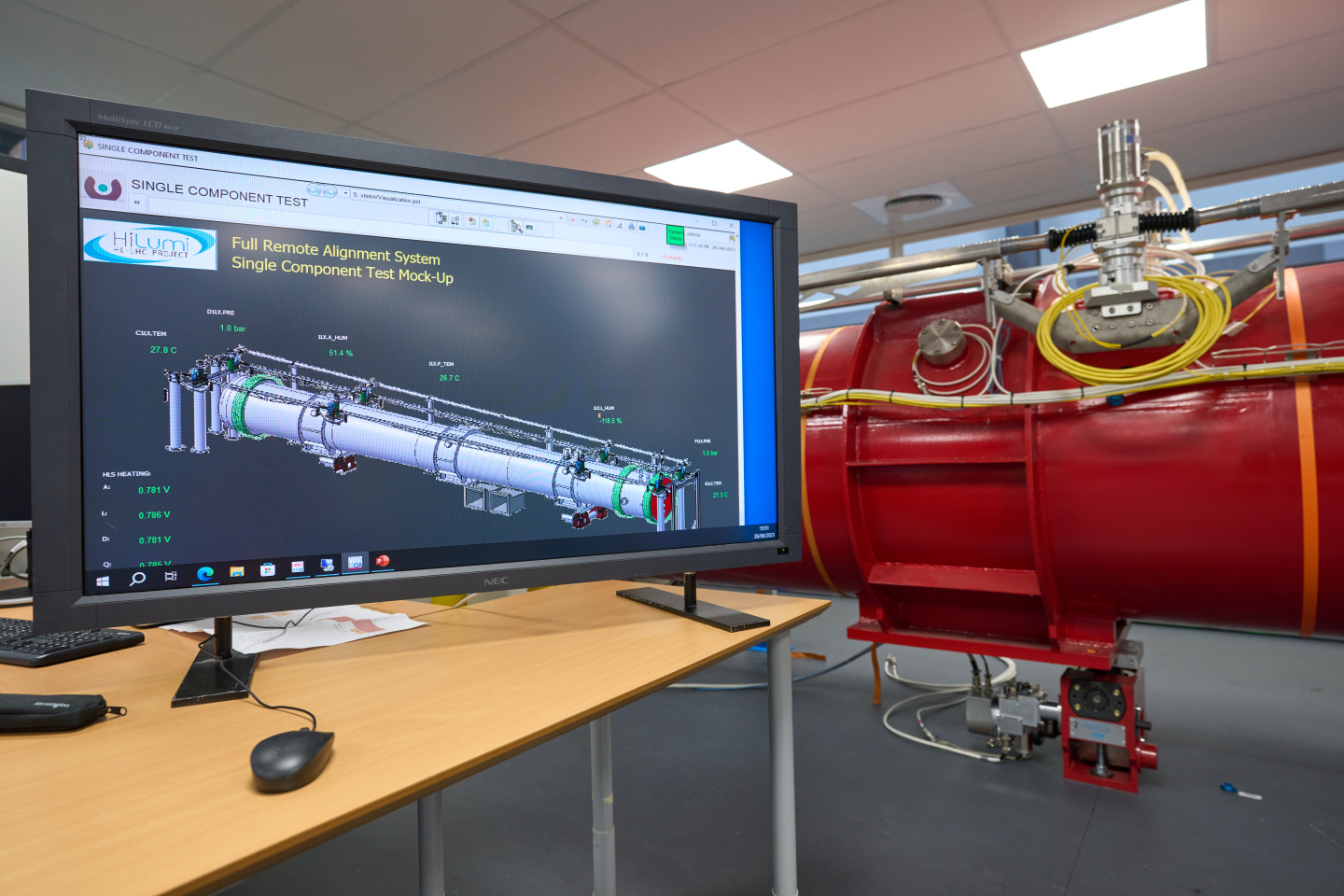
Solutions for the new remote alignment system (FRAS) have been defined and validated using a test model. (Image: CERN)
"When dealing with a 27-km-long machine whose components must be aligned to within a few tenths of a millimetre, or sometimes even a few micrometres, CERN's surveyors can no longer consider the Earth to be spherical, let alone flat: all the details of its elliptical (geoid) shape come into play." That's how Hélène Mainaud-Durand (BE-GM) describes the challenges involved in aligning the magnets and other components of the HL-LHC. These major technological difficulties were first encountered during the installation and operation of the LHC and are even trickier with the constraints of the HL-LHC. The new HL-LHC remote alignment system (FRAS), which passed its first test with flying colours this summer, will be a key tool for meeting the future challenges of safe alignment.
The FRAS is an alignment system comprising almost one thousand sensors distributed along the 200 metres of new magnets that are installed on either side of the ATLAS and CMS detectors. The sensors, along with their electronics and software programs and a system of motorised jacks on which some of the components will sit, will be used to adjust the relative positions of the components remotely, in real time, with no human intervention needed in the cavern. This is a crucial requirement in the irradiated environment of the HL-LHC. Although a similar remote-controlled system has already been deployed along 50 metres of magnets inside the current accelerator, the FRAS, which will cover a greater distance, is innovative in several respects. The alignment tolerance will be the same as it is now (+/- 0.15 mm) but the system will cover a much greater distance (200 m instead of 50 m).
The new system boasts two different alignment technologies. The first is a classic capacitive technology based on measurements of the distance between several sensors that are distributed along the row of magnets and are connected by a 220-metre-long wire integrated into the HL-LHC sensors and components. Although this system uses well-known technologies, major adaptations have been needed to meet the specific requirements of the HL-LHC: to protect the sensors from radiation, their electronics are separated from them, connected to them by 120-metre-long cables made of materials suited to the hostile environment - a major technical challenge.
In addition, this first system is supplemented with a second, novel technology known as frequency sweeping interferometry (FSI). This technique involves measuring the distance between the end of an optical fibre (the measuring head) and several targets consisting of reflective glass spheres that have been specially developed for use in this system. This ingenious technology, which does not require cables (only an optical fibre is needed), will be used not only to confirm the measurements taken using the first system but also, for the first time, to determine the position of the cold masses inside the magnet cryostats.
"The FSI technology has been developed in house and is the fruit of eight years of research and development carried out jointly by several groups from the BE department, with the help of many teams across the Laboratory. Using a method that had already been tried and tested at the National Physical Laboratory in the United Kingdom, we were able to design a solution that suited our own requirements and in which several other physics laboratories have already expressed interest. Mastering this technology at CERN also means that we have all the cards in hand ready for the industrialisation phase of the sensors, which will begin soon", explains Hélène Mainaud-Durand.
Following its baptism of fire on a magnet prototype at the metrology laboratory this summer, the FRAS will first be tested on the HL-LHC magnets at the inner triplet testing string (IT-String) in 2024, before finally being installed in the cavern during Long Shutdown 3 (LS3), which is planned for 2027.
(Video: CERN)






